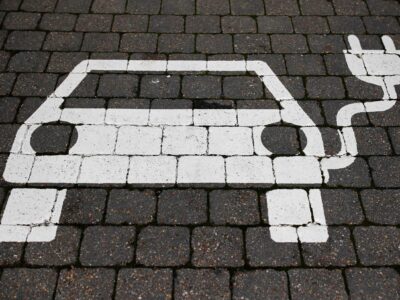Artificial intelligence (AI) is a hot topic. ChatGPT was released in November 2022, and it didn’t take long before it dominated mainstream headlines. In the months since, there’s been a never-ending stream of AI-backed startups, technologies, and innovations.
And whether it’s the recent leadership drama at OpenAI or debates on how the tech will affect —insert an industry — in the ensuing years, avoiding news about it is nearly impossible. Many of us humans (I promise I’d pass a captcha test) are worried about AI’s real-world repercussions.
Of course, these concerns range from job replacement to real-world versions of the “Terminator” trilogy. And while some raise legitimate concerns, there are ways that AI is being used to help humanity right now in tangible ways. So, instead of fear-mongering or posing hypothetical scenarios about AI turning evil, let’s look at some of the positive uses for the technology happening now — like cutting down on traffic congestion (no kidding).
Before diving in, there’s one caveat worth explaining: AI uses a fair amount of energy. And while some of those have substance, there’s a lot of misinformation swirling around, too. In truth, the technology is still in its early stages, and the full picture of its power consumption is still coming into focus.
“The energy needed to power this technology is increasing at a much slower rate than many forecasts have predicted,” Corina Standiford, a spokesperson for Google, told The Verge.
ChatGPT Goes To Med School?
The notion of AI being used in the medical field could understandably sound like dystopian sci-fi, but it’s actually happening right now. Scientists in the Netherlands published a study about training an AI called Sturgeon to help diagnose brain tumors and enhance related operations.
The team first used deep learning and data sets to train Sturgeon on detecting different types of brain tumors.
After a bit of fine-tuning and adjustments, Sturgeon was tested and accurately diagnosed 45 out of 50 brain tumor samples — it failed to provide an answer due to lack of data for the other five.

Photo Courtesy ironhorse71
A major difficulty for brain tumor surgeons is determining the specific type (and subtype) of tumor they are operating on. Diagnosis can be very difficult, and, in many cases, operations take place before knowing the specific type of tumor.
Sturgeon could drastically benefit these surgeries by quickly and accurately determining the specific type of tumor during the operation, helping the doctors treat them more efficiently and safely. The technology is still a long way from widespread adoption, but it’s a great example of how AI is being developed to assist humans, not replace them.
AI Traffic Control
Google’s Project Green Light is on a mission to reduce traffic congestion and pollution with the help of AI. The group uses machine learning to collect important Google Maps data related to traffic, like congestion hotspots and time spent waiting at different lights. The data is then fed to AI models, which make real-time changes to traffic lights based on past data to decrease traffic congestion and waiting times.
Project Green Light is operating in a handful of major cities worldwide, and early tests show it led to a 10 to 20% reduction in fuel and intersection delay time.
Using Robots To Track Human Emissions
Floods can be truly devastating, and in certain areas of the world, it can be challenging to access warnings, evacuations, and information about potential incoming floods. A few years ago, Google set out to develop a flood-tracking system to solve that very problem. The only issue? There are a lot of factors to predict flooding, like the soil type, local climate, regional weather patterns, and water levels in different areas.
After intense work, a lot of machine learning, and even more satellite imagery, the team launched Flood Hub in India in 2018.
The tool accurately predicts and warns users of incoming floods in their area, sometimes as early as seven days in advance. Today, Flood Hub is available in more than 20 countries, and it’s expanding to parts of the U.S. and Canada this year.

Photo Courtesy Mohamed_hassan
Climate TRACE is a free online platform using machine learning and map data to track global greenhouse gas emission hotspots. While the idea might sound less world-changing than an AI-powered assistant, the free platform is basically increasing emissions transparency with the assistance of AI technology. The data is updated in real time, and users can filter the interactive map to sort by industry, type of emission, and much more.
Future Outlook
These examples of AI being used to do some good in the world aren’t going to fundamentally shift our future for the better, but they do show the potential for such a shift. Take ClimateTrace: it’s not altering how we live our day-to-day lives, but it shows how it can be used to increase data and climate transparency. And that’s the key takeaway! AI is still a nascent technology, but even now, people are showing how it can be used to help our communities and ourselves.





